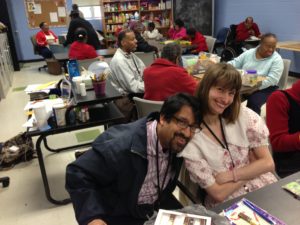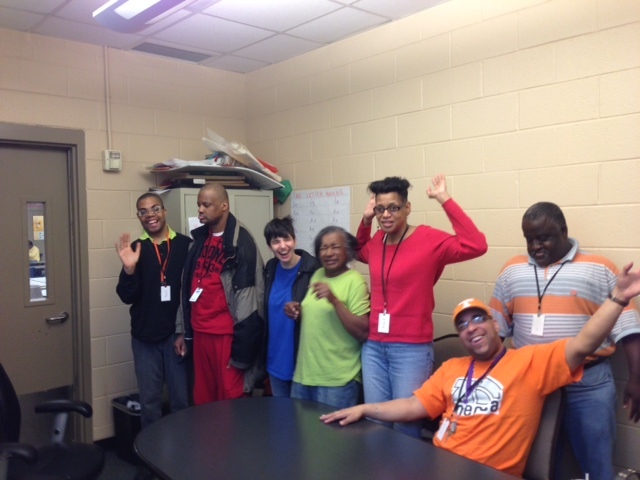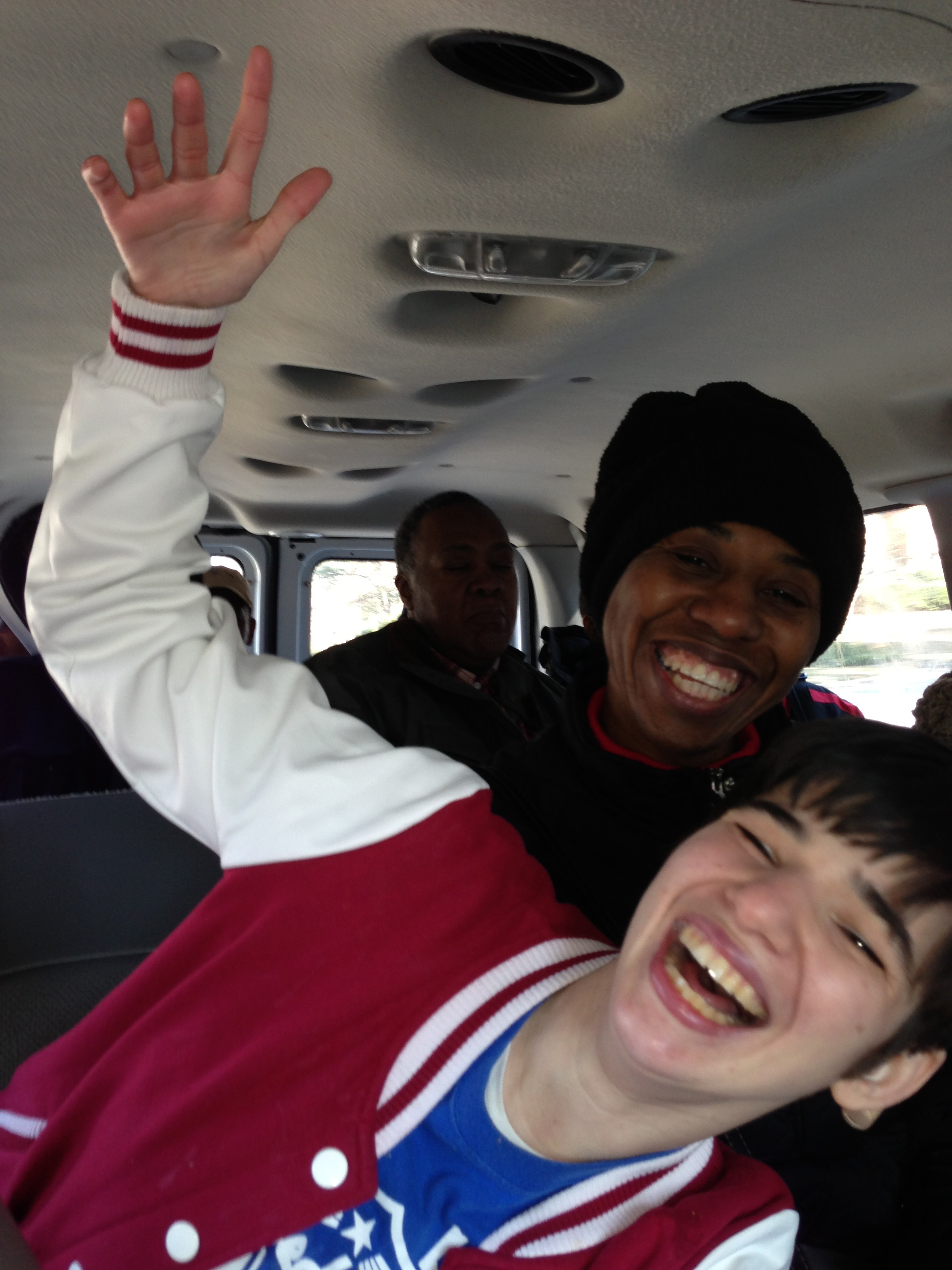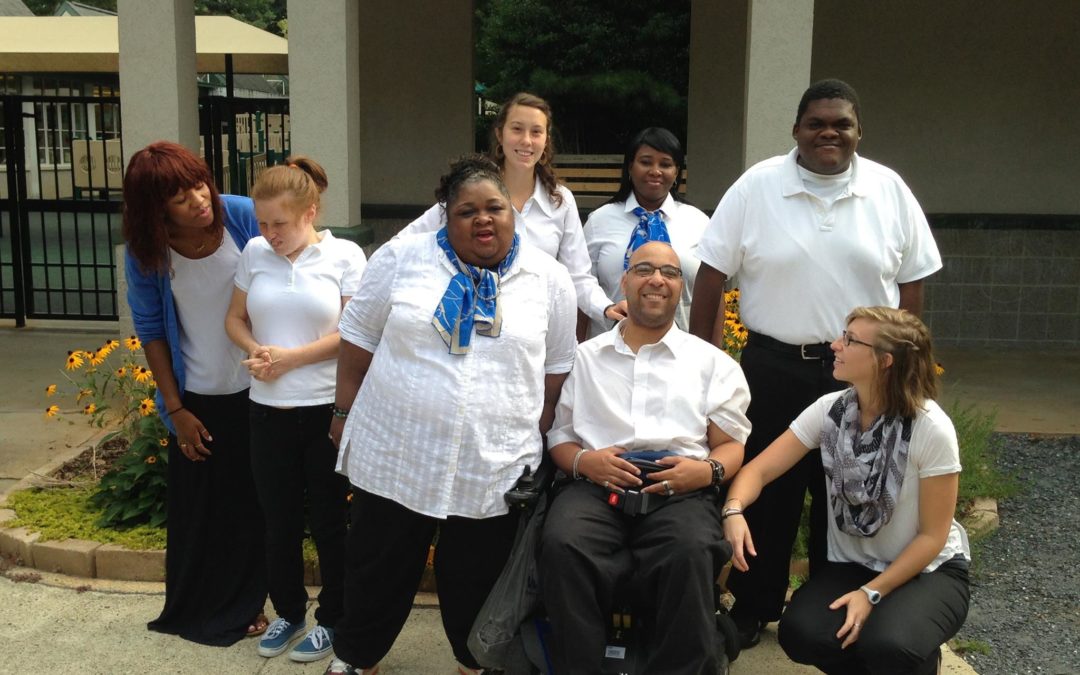Someone recently asked me how I have seen God most in this year, and without hesitation thought about my relationships at Frazer Center. Coming into the center my first week struggling to remember the 100 adult participants names, 150 children’s names depending on which class I was in not to mention my coworkers who are weary of another employee who may not make it past the first week (a hard to break pattern of new hires). I knew it would be a difficult adjustment to settle in and get to know all of these new people, but had no idea what the end point would look like, or how rewarding the journey would be.
 At the beginning of the program, I had very little direction on what I should be doing day in and out, which was incredibly challenging. Wandering around amidst strangers asking where I could be helpful, trying to figure out how the program functions and runs without much knowledge on the wildly diverse behaviors, abilities, and attitudes of the developmentally disabled population we serve. Every day was a struggle trying to make friends with adult participants and co-workers alike while trying not to look overwhelmed—which I was wrestling inside. For these first few months, I gravitated toward working one-on-one with adults in different classrooms, which allowed me to begin to build trust and friendships.
At the beginning of the program, I had very little direction on what I should be doing day in and out, which was incredibly challenging. Wandering around amidst strangers asking where I could be helpful, trying to figure out how the program functions and runs without much knowledge on the wildly diverse behaviors, abilities, and attitudes of the developmentally disabled population we serve. Every day was a struggle trying to make friends with adult participants and co-workers alike while trying not to look overwhelmed—which I was wrestling inside. For these first few months, I gravitated toward working one-on-one with adults in different classrooms, which allowed me to begin to build trust and friendships.
One of the pivotal moments of my experience at Frazer came when I was trying to figure out how to handle one of our new and most difficult adults who presented dangerous and self-destructive behaviors. Something I have learned from years of exploration along my own spiritual journey is the importance of being understood and listened to, and how important language is in that understanding. Our adult is mostly deaf, and communicates mainly through sign language and gestures. When looking at our staff, only one or two have had any sign language experience and didn’t really use it with this adult. I began to notice his behaviors stemming from confrontation amongst peers and adults where he couldn’t communicate, and I saw a deep need for ability to communicate with him—so I began to learn some basic sign language.
 Starting with “how are you?” and “stop” I began looking at sign language books, taking online sign classes, and learning from those with experience around me. I now teach a weekly sign language class for both hearing and deaf adults, and have also been working with staff to learn easy ways of communicating with the many adults who use sign at the center every day.
Starting with “how are you?” and “stop” I began looking at sign language books, taking online sign classes, and learning from those with experience around me. I now teach a weekly sign language class for both hearing and deaf adults, and have also been working with staff to learn easy ways of communicating with the many adults who use sign at the center every day.
The ability to listen and understand these adults has been paramount to my settling into the program and feeling like a part of the community. Each of these adults has an amazing and unique personality that is essential to the vitality of the community. Letting their voices be heard, often through non-traditional forms of communication is the challenge that I face everyday, and it pushes me to listen in ways I’m not the most familiar with.
 I can’t describe what it feels like to walk into a room and see smiles of people who are genuinely happy to see me and to be heard. It’s the sustaining quality of this work, where it seems that much of the rest is setting one up for burnout.
I can’t describe what it feels like to walk into a room and see smiles of people who are genuinely happy to see me and to be heard. It’s the sustaining quality of this work, where it seems that much of the rest is setting one up for burnout.
-Liz Nicholson, 2012-13 Atlanta Fellow

